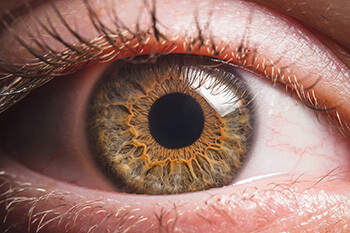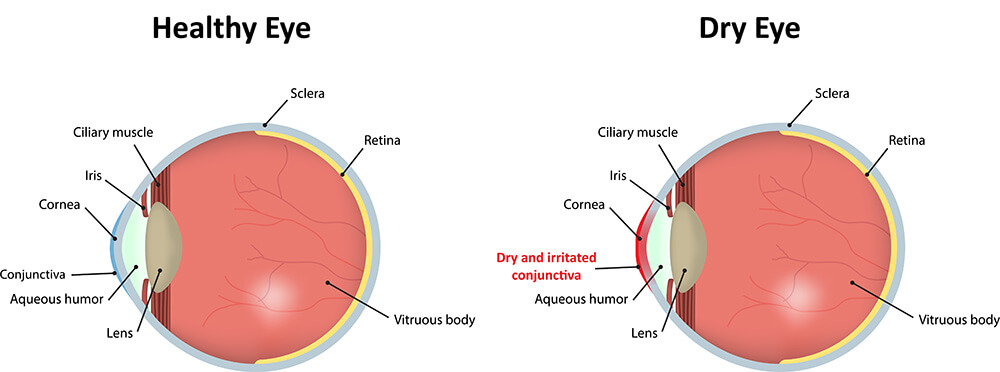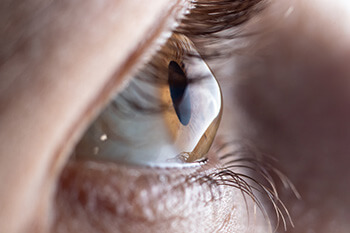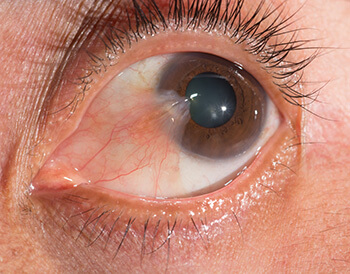New York Cornea Treatment

The cornea is the dome shaped, clear surface that covers the front of the eye. It is the eye’s outer most layer. The cornea helps the eye in two ways: It helps to protect the rest of the eye from germs, dust, and other harmful substances, and it controls the focus of light into the eye.
Diseases of the cornea and external surfaces are among the most common types of eye problems.
Below are some of the more often seen diseases and disorders of the cornea and the ocular surface or external eye:
Allergies
Most allergies affecting the eye are those related to pollen. Symptoms include tearing, redness, itching, stinging, and watery discharge. Antihistamine decongestant eye drops can effectively reduce these symptoms. Many eye allergies can be attributed to medications and contact lens wear. Also, certain cosmetics and animal hair can cause allergies that affect the eye. The symptoms are usually temporary and can be eliminated by avoiding the cause of discomfort.
Conjunctivitis (commonly called Pink Eye)
This is a group of diseases that cause swelling, itching, burning, and redness of the conjunctiva. Some types of Conjunctivitis can spread from one person to another. Conjunctivitis can be caused by a bacterial or viral infection, allergy, environmental irritants, a contact lens product, eye drops, or eye ointments. Medications are available to treat many types of Conjunctivitis.
Fuch’s Dystrophy
Fuch’s Dystrophy is an inherited corneal disease that slowly progresses and usually affects both eyes. It occurs when the endothelial cells of the cornea break down. As more endothelial cells are lost, it becomes less efficient at pumping water out the stroma, causing the cornea to swell and distort vision. Early symptoms of Fuch’s Dystrophy start with blurred vision in the morning that clears through the day. As the disease worsens, this swelling will remain constant and vision will be greatly reduced. When first treating the disease, doctors will try to reduce the swelling with eye drops, ointments, or soft contact lenses. This disease cannot be cured, but with the use of eye medication, the symptoms can be minimized. If vision is significantly affected, you may need to consider having a corneal transplant to restore sight. Recently, a modification of the standard corneal transplant called Descemet’s Stripping Endothelial Keratoplasty or DSEK allows rapid improvement of vision with reduced astigmatism.
Dry Eye
Dry Eye occurs when the eye does not produce enough tears, or when the tears are not of the correct consistency and evaporate too quickly. Tears are normally produced at a steady rate, and the eye stays moist and comfortable. Inflammation of the surface of the eye may occur along with Dry Eye, creating irritation and discomfort.

Symptoms of Dry Eye may include scratchiness, stinging or burning, stringy discharge from the eye, and pain or redness. Dry Eye is sometimes a chronic condition, but our doctors can prescribe treatment to keep your eyes healthy, more comfortable, and help your vision from being affected.
Keratoconus

Keratoconus is a corneal disorder that affects one in every 2000 Americans and most often begins in the teenage years. There may be progressive thinning and a cone-shaped distortion of the cornea which may reduce one’s vision.
Early treatments usually include prescription eye glasses, and as the disease progresses, special contact lenses may be fitted in order to improve vision. Recent advances in treatments for Keratoconus have greatly improved the long term visual outcomes for patients. Corneal transplants are an option depending on the severity of the disease.
Ocular Herpes
Ocular herpes is a recurrent viral infection that is caused by the herpes simplex virus and is the most common infectious cause of corneal blindness in the U.S. Ocular herpes can produce a painful sore on the eyelid or surface of the eye and cause inflammation of the cornea.
Like other herpetic infections, herpes of the eye can be controlled. Prompt treatment with anti-viral drugs will help to stop the herpes virus from multiplying and destroying epithelial cells.
Pterygium

A pterygium is a pinkish, triangular-shaped tissue growth on the cornea. Some pterygia grow slowly throughout a person’s life, while others stop growing after a certain point. Pterygia are most common in sunny climates and in the 20-40 age group. Doctors do not know what causes pterygia to develop.
Because a pterygium is visible, many people want to have it removed for cosmetic reasons. Surgery to remove a pterygium is not recommended unless it affects vision. If a pterygium is surgically removed, it may grow back. Lubricants can reduce the redness and provide relief from the chronic irritation.
